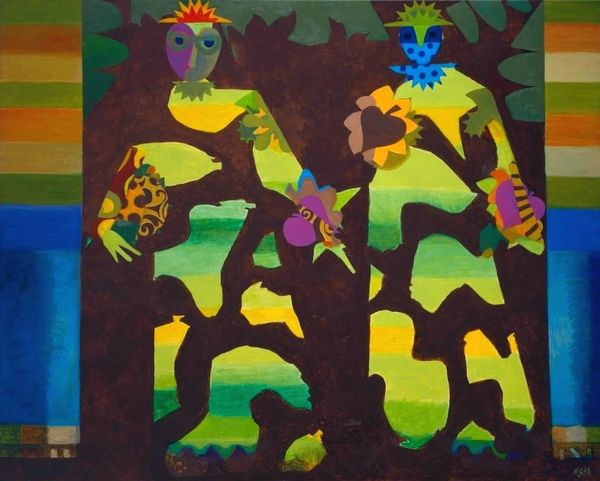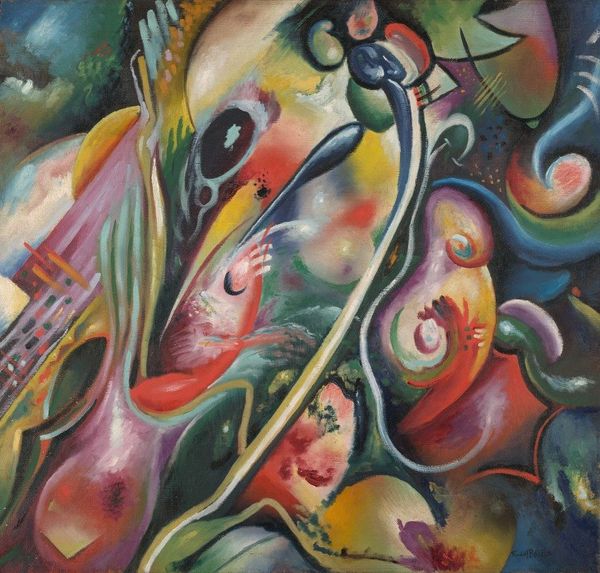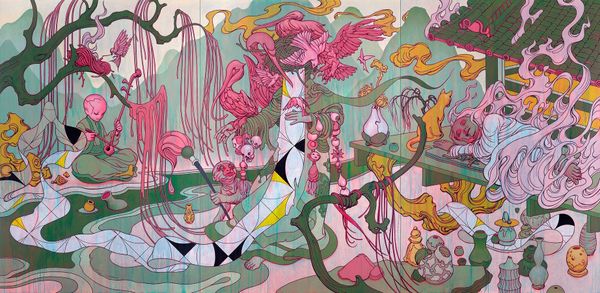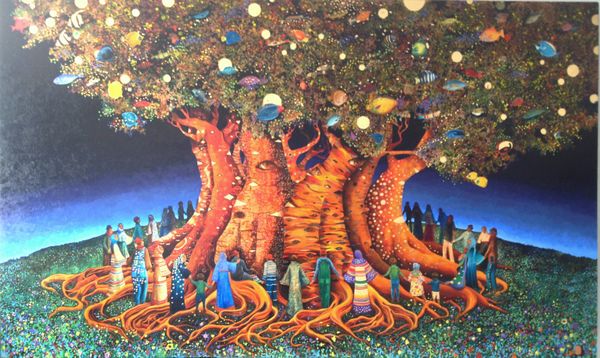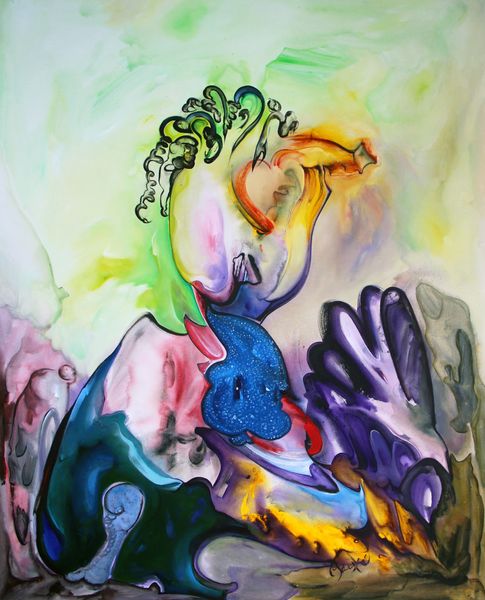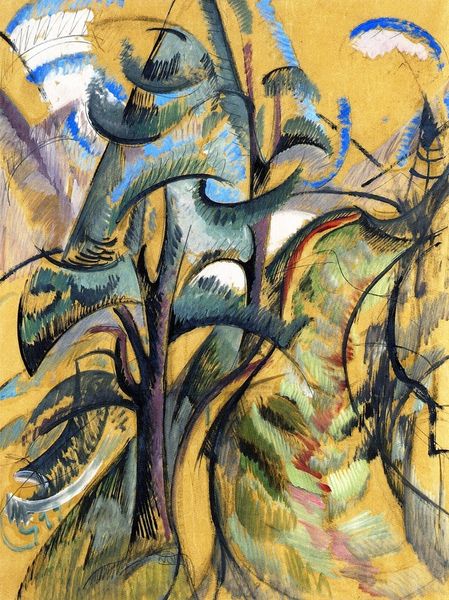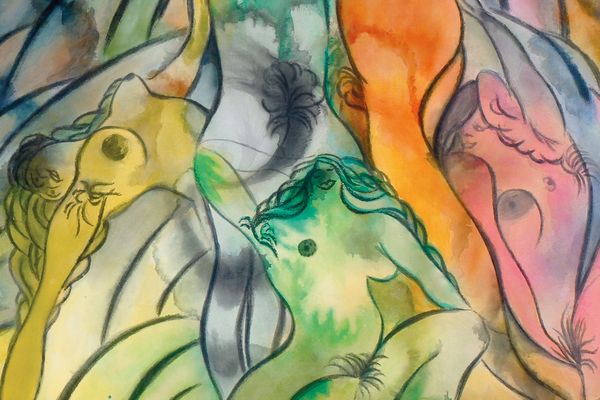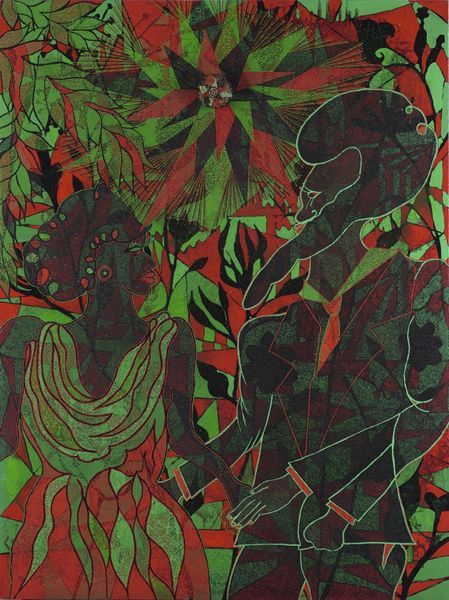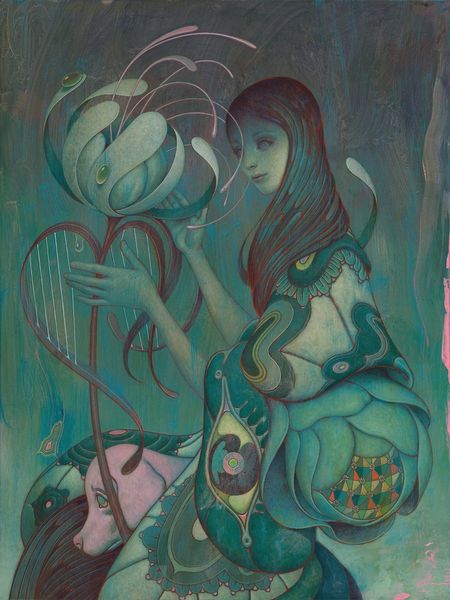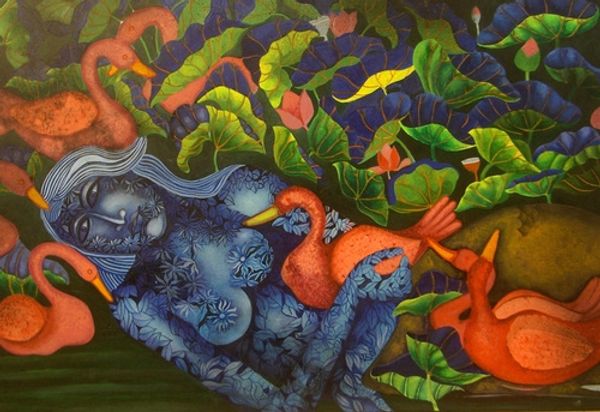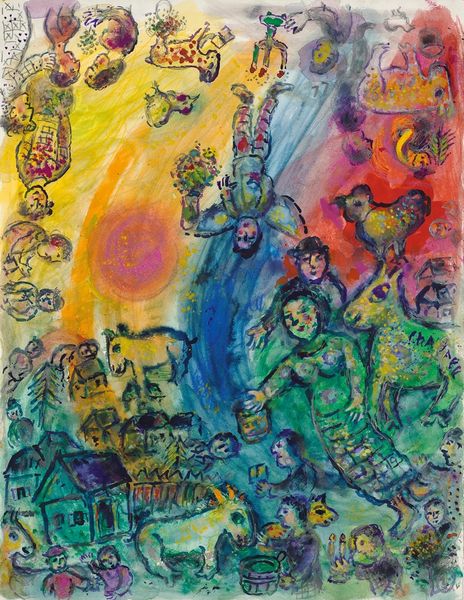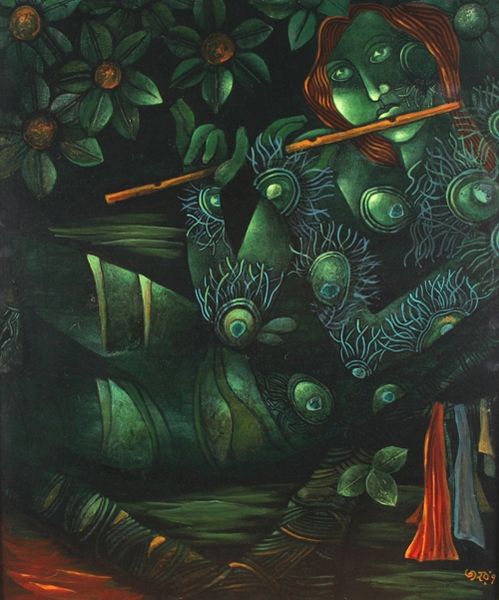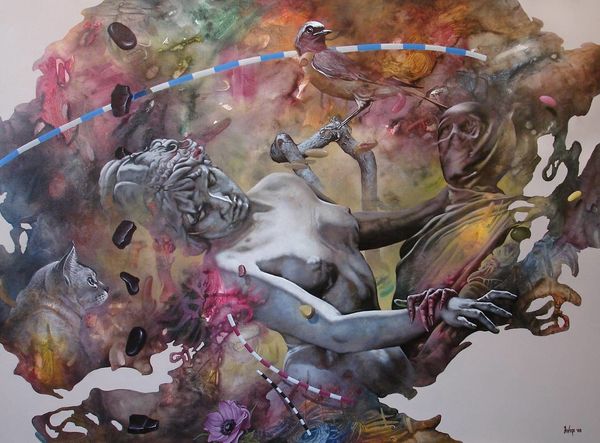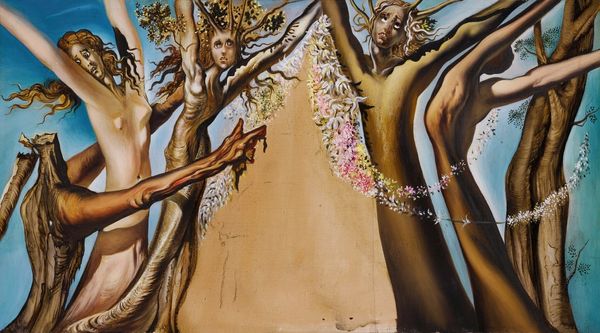
mixed-media, painting
#
mixed-media
#
organic
#
abstract painting
#
painting
#
figuration
#
abstraction
Copyright: Simon Hantai,Fair Use
Curator: Standing before us is "Femelle-Miroir II" by Simon Hantaï, completed in 1953. It's a mixed-media piece that resides here at the Centre Pompidou in Paris. Editor: Well, immediately I'm struck by the painting's unsettling blend of biomorphism and something almost grotesque. There's this sense of unease, like witnessing a surreal autopsy. The muted, almost decaying greens and browns only intensify that feeling. Curator: I find it interesting that you use the term 'grotesque.' It is vital to consider the context in which Hantaï was working. Post-war Europe was grappling with trauma and a crisis of representation. His exploration of the body through organic abstraction can be seen as a reflection of that societal disquiet. He destabilizes conventional figuration to expose an existential anxiety. Editor: Precisely. It’s more than just 'anxiety' though; it is a comment about objectification, the fractured female identity subjected to the male gaze through its disturbing combination of natural forms and symbolic dismemberment. Curator: Let's unpack the title further. The term "Femelle-Miroir" – "Female Mirror" – raises questions. Whose reflection are we seeing? Is it society's distorted image of womanhood or an attempt at self-representation, however fragmented? The placement of these fleshy figures almost behind a conceptual 'window' is equally telling; are we viewing these images as 'on display' for consumption? Editor: I also think about how institutions can also become that distorting mirror. Is the Centre Pompidou itself complicit in exhibiting or reifying historical modes of depicting women? Whose stories get to be told? How are these representations controlled and consumed within gallery settings? This is definitely a great painting to stimulate thoughts and discussions. Curator: It certainly is. By using this interplay between the recognizable form and complete abstraction, the historical gaze and sociopolitical representation, it’s up to the viewer to decide the story these abstracted and biomorphic bodies are hoping to portray and expose in today's sociopolitical sphere. Editor: Absolutely, and this painting definitely does challenge you, even confront you in that manner. A powerful conversation piece.
Comments
No comments
Be the first to comment and join the conversation on the ultimate creative platform.
